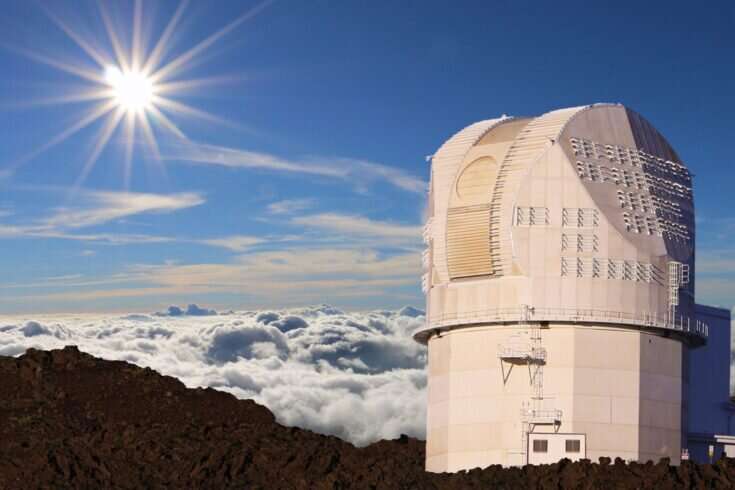This article has been reviewed according to Science X's editorial process and policies. Editors have highlighted the following attributes while ensuring the content's credibility:
fact-checked
peer-reviewed publication
proofread
New findings released from world's most powerful solar telescope

New research conducted as part of the science verification phase of the Visible Spectropolarimeter (ViSP) instrument at the National Science Foundation's Daniel K. Inouye Solar Telescope is the first to use data from this instrument. It is hoped that the work will pave the way for future studies to enable a better understanding of the potential risks to key power and communications infrastructure.
The study, which is published in The Astrophysical Journal Letters, was the result of an exciting collaboration between the U.K. and the National Science Foundation and marks an important milestone for the astronomical community and this ground-breaking telescope.
Decades of work
The Daniel K. Inouye Solar Telescope is a four-meter solar telescope based in the island of Maui in Hawai'i. It is the largest and most powerful solar telescope in the world and was built as part of a multilateral international collaboration that began nearly three decades ago. It aims to improve our understanding of the sun and its role in space weather events.
STFC is a key partner in the Daniel K. Inouye Solar Telescope collaboration and led a consortium of research organizations as part of the design phase of the telescope to develop cameras that were used to record data in this latest study.
STFC Rutherford Appleton Laboratory (RAL) Space also collaborated with Observatory Sciences Ltd on the design of the control system for the telescope, which is essential to ensuring accurate positioning and image quality.
Monitoring global risks
Furthering our knowledge of the sun is important for understanding how space weather events could affect key technologies such as electrical and communication networks.
These events, driven by solar activity, could disrupt vital technological systems such as positioning and communications services and spacecraft operations and are already listed on the U.K. government's risk register.
Researchers led by Dr. Ryan French, a former Ph.D. student at University College London's Mullard Space Science Laboratory, utilized the unprecedented signal to noise ratio of the Visible Spectro-Polarimeter (ViSP) instrument on the Daniel K. Inouye Solar Telescope.
This ability of the telescope enabled them to investigate the propagation of a phenomena known as an umbral flash within the lower solar atmosphere. Umbral flashes are instances of brightening in the sun's chromosphere which travel via a sequence of waves and shocks.
The ViSP instrument is unique to the Daniel K. Inouye Solar Telescope, which measures solar activity by expanding incoming light into its components like a prism to create a "rainbow." From this it can pick out almost any combination of wavelengths to record.
The data gathered by ViSP in the study provides new insights into how waves can travel in the low solar atmosphere, providing a small glimpse of what future data from the instrument will achieve.
Hopes for the future
Dr. Ryan French, now a solar physicist at the U.S. National Solar Observatory, said, "It's been an exciting time to join the National Solar Observatory, and a privilege to be among the first people to publish results from a transformative facility like the Daniel K. Inouye Solar Telescope. Our understanding of the solar atmosphere has progressed a lot in the last decade, as we begin to enter a golden age of solar physics with observations from the Daniel K. Inouye Solar Telescope, ESA's Solar Orbiter and NASA's Parker Solar Probe.
"Without the Daniel K. Inouye Solar Telescope, we would not be able to measure the variations of the magnetic field in the Sun's chromosphere we observed in this study. This data is just a taster of the capabilities ViSP has to offer, and it is exciting to think what further discoveries the solar physics community will make with the telescope."
More information: Ryan J. French et al, First Observation of Chromospheric Waves in a Sunspot by DKIST/ViSP: The Anatomy of an Umbral Flash, The Astrophysical Journal Letters (2023). DOI: 10.3847/2041-8213/acb8b5
Journal information: Astrophysical Journal Letters
Provided by UK Research and Innovation




















